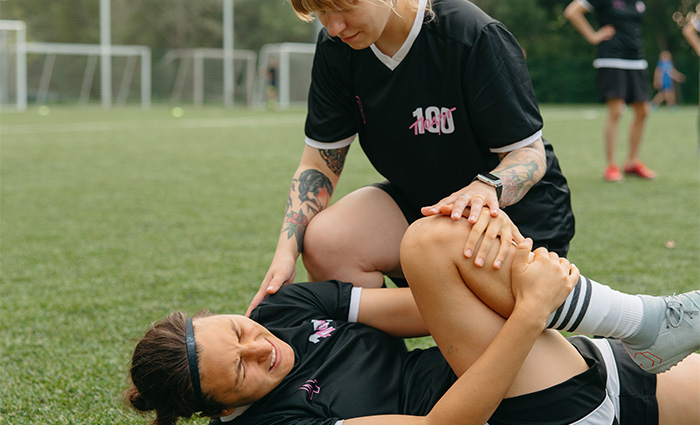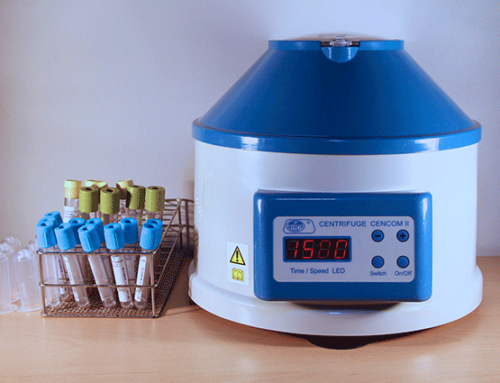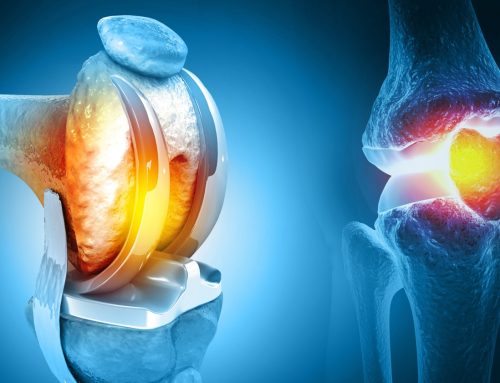With a new school year comes a new season of high school sports. As a parent, you should watch for the most common sports injuries so your star athlete will not be sent to the sidelines. An estimated two million injuries occur among high school athletes each year. Let’s take a closer look at the most common sports injuries.
Sprains and strains
Sprains and strains are the most common injuries for athletes in any sport, including football, basketball, soccer and cross country running. The terms “sprain” and “strain” both sound similar, but these injuries affect different areas of the body.
A sprain occurs when ligaments around a joint are stretched or torn. The area may be tender and swollen, and movement may cause pain. Sprains often leave a bruise around the affected joint. Ankle sprains are common among high school athletes.
A strain commonly affects the muscles or tendons. Symptoms are like a sprain but often include muscle spasms. Strains often occur in the hamstrings or lower back.
Mild sprains and strains can take two to six weeks to heal, but severe issues can take up to a year. Athletes should always warm up and cool down after activity, use proper equipment and not push themselves when they feel pain.
Shin Splints
Shin splints may sound minor in comparison to other injuries, but they can be just as painful. A common running injury, shin splints cause pain along the front of the calf. They generally occur when an athlete overworks the muscle, tendons and bone tissue in the lower leg.
Symptoms of shin splints are usually easy to spot. While playing sports, pain is felt through the lower leg or shinbone. The muscle can also feel sore or swell slightly. In most cases, the pain will subside with rest. Shin splints could lead to a bigger problem if rest and reduced activity do not resolve the issue. If an athlete decides to “push through the pain,” a stress fracture could develop in the bone.
If you think you have shin splints or another issue, make an appointment with an orthopaedic doctor to have it checked.
Fractures
A bone fracture can occur in any sport, but it is most common among football players and when playing basketball because of frequent and sometimes forceful physical contact.
A stress fracture is a tiny crack in the bone caused by repetitive force from overuse. Symptoms include pain and swelling in the affected area that may go away during rest.
A broken bone can be fully or partially fractured from impact or a fall. Common areas for fractures include the wrist, hand, ankle, foot or collarbone. The symptoms of a fracture are usually apparent. It can cause intense pain and swelling, and the skin may be broken.
Recovery from a fracture can take eight to 12 weeks but depends on the severity of the break and which bone was broken. Other factors that affect recovery are age and overall health.
Fractures cannot always be prevented, but athletes can reduce the risk of fractures by wearing the proper equipment and avoiding outdoor sports when it is wet or visibility is low.
Ligament tears
A ligament tear is a common sports injury because of repetitive and high-impact movements associated with contact sports like football. Ligaments in the knee, ankle, shoulder, wrist and hands are most often affected.
Many athletes have dealt with a damaged anterior cruciate ligament (ACL), one of the most common knee injuries. An ACL injury occurs when the ligament in the knee is overstretched or torn. Symptoms of an ACL injury include a popping sensation in the knee, pain, swelling and reduced flexibility in the joint.
Doctors use a grading system to determine the severity of a ligament injury. Grade 1 is mild, grade 2 is moderate and grade 3 is a complete ligament tear. The treatment for the first two grades is PRICE (protection, rest, ice, compression and elevation). The patient may also need a brace and medicine to manage pain and inflammation. A grade 3 ligament injury may require more advanced treatment, including surgery.
Building strong muscles around the joints can help prevent a ligament injury. Many athletes continue to train during the offseason to ensure they stay strong and flexible. Proper technique when jumping, landing and pivoting can also reduce the stress on joints and ligaments.
Tendon damage
Like ligaments, tendons can be damaged from overuse during sports. Tendons are a tough band of tissues that connect muscle and bone. Two types of damage can occur: tendonitis, or acute inflammation of the tendon, and tendinosis, which is a chronic condition caused when the tendon begins to break down.
Athletes who participate in sports with repetitive forceful motions, like throwing and hitting balls in baseball or jumping to land a shot in basketball, can develop tendonitis. Tennis players, golfers and swimmers can also develop tendonitis. Tendonitis can affect the wrist, elbow, shoulder, knee and heel (also known as the Achilles tendon).
Symptoms include difficulty moving the joint, feeling a crackling sensation in the area and a dull pain that gets worse when you extend the joint. Pain may happen suddenly or gradually build.
Tendonitis symptoms may subside with rest, ice packs and avoiding the activity that causes pain. If the issue persists, a doctor may want to put a splint on the area to limit movement and use steroid injections for pain.
The damaged area should heal within two to four weeks, but it can take longer if the tendon has not had time to fully heal. Chronic tendonitis could be caused by degeneration of the tendon and should be evaluated by a doctor.
Like most sports injuries, tendonitis can be prevented by warming up before activities, improving form, building up to a higher intensity movement and by listening to your body when you feel pain.
Get your sports injury checked out
If you have a sports-related injury, find a doctor who specializes in sports medicine. The team at Cary Orthopaedic are board-certified orthopaedic doctors who can diagnose and treat injuries in athletes of all ages. Call today to talk to one of our sports medicine specialists.






